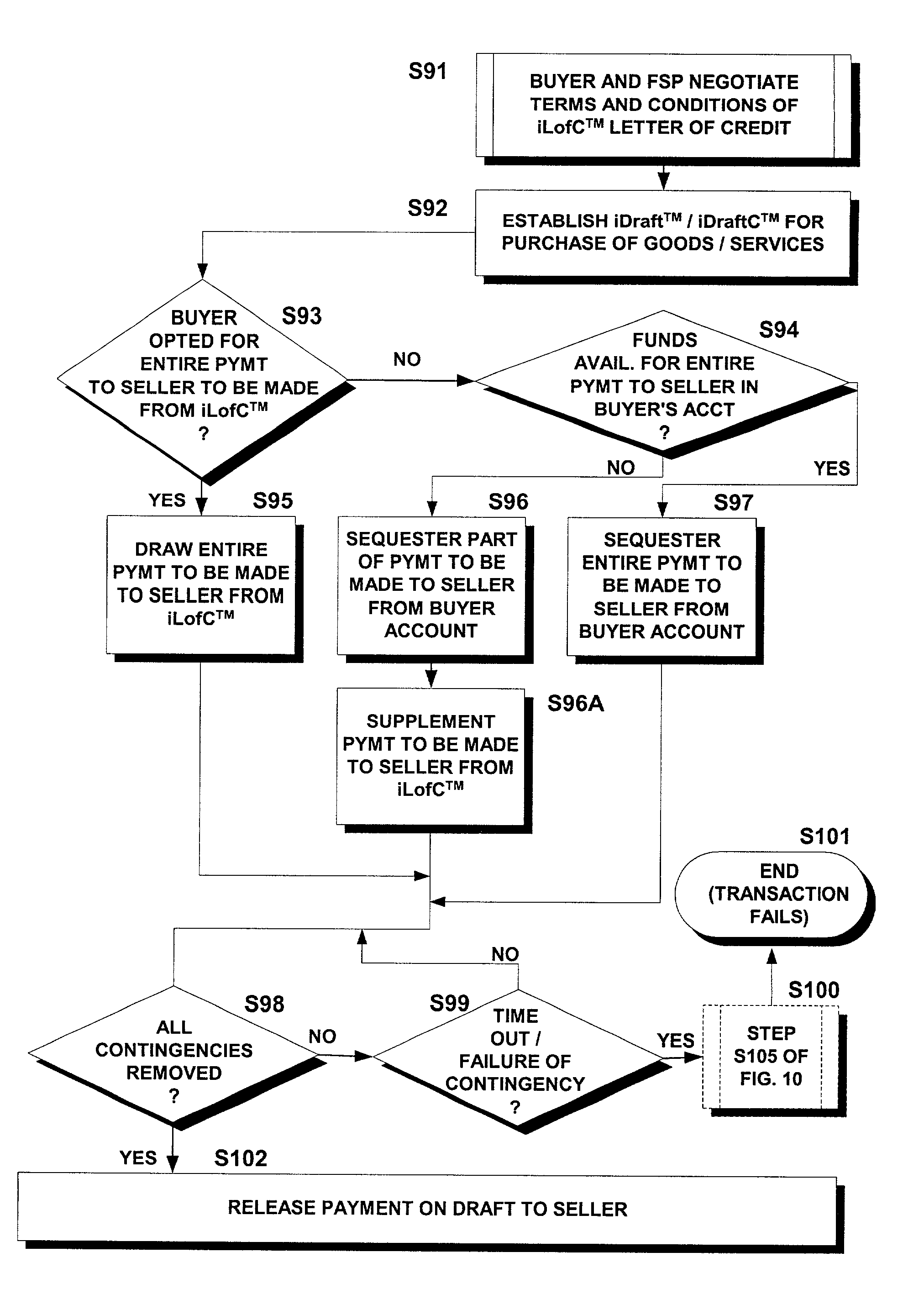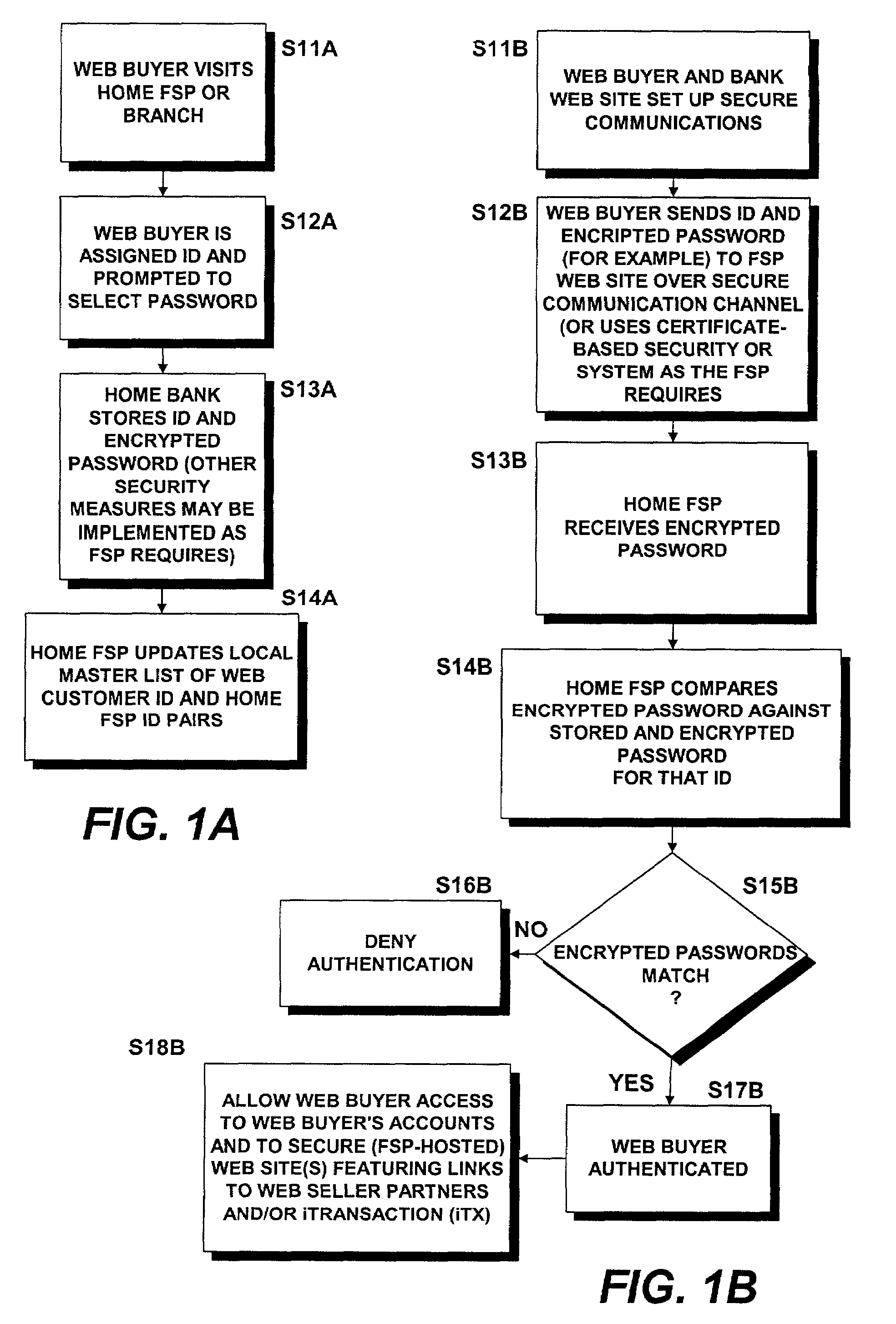Methods and systems for carrying out contingency-dependent payments via secure electronic bank drafts supported by online letters of credit and/or online performance bonds
a technology of contingency-dependent payments and secure electronic bank drafts, applied in the field of electronic commerce, can solve the problems of fraud and misuse of credit card information, theft (or misappropriation), and otherwise valid credit card numbers being fraudulently used to purchase goods or services over the web, so as to ensure the integrity and security of buyer's personal and financial information
- Summary
- Abstract
- Description
- Claims
- Application Information
AI Technical Summary
Benefits of technology
Problems solved by technology
Method used
Image
Examples
implementation example 1
Online Auction
[0075]In the online auction example, multiple buyers bid on one or more objects or services sold by a seller through a Web site. Neither the buyers nor the sellers wish to needlessly disseminate personal information, yet each desires some assurance that the other party will perform: the auction buyer having placed the winning bid wishes to protect his or her confidential information, wishes to assure him or herself that the item in question is as described by the seller and be assured that the seller will, in fact, deliver the purchased item in a timely manner. The seller, in turn, requires some assurance that the bid amount will be properly credited to seller's account before parting with the involved item. Both parties may wish to protect and restrict the dissemination of their respective personal information without, however, resorting to such identification-surrogates as credit card and / or social security numbers. The present inventions satisfy these requirements b...
implementation example 2
Real Estate Transaction
[0078]A real estate sale may be handled through a trusted party such as an escrow agent that is a member of the iDraft™ system. The escrow agent's FSP (the escrow agent and the FSP may be one and the same) may enroll selected employees (agents) of the escrow agency, with appropriate privileges assigned through the trusted party's (e.g., FSP's) Directory software at the time IDs and passwords are created. The escrow agent may create an iDraftC™ transaction from his or her account as a contingent payment to the real estate seller, including all necessary contingencies in the instrument and assuming that the final payment is to be received by the seller after all other funds are distributed and all other contingencies are removed. The escrow agent may create an iTX™ transaction that includes the iDraftC™ transaction above and iDraft transactions to other parties to pay off loans, pay fees or encumbrances on the real estate, pay real estate sales commissions, and ...
PUM
 Login to View More
Login to View More Abstract
Description
Claims
Application Information
 Login to View More
Login to View More - R&D
- Intellectual Property
- Life Sciences
- Materials
- Tech Scout
- Unparalleled Data Quality
- Higher Quality Content
- 60% Fewer Hallucinations
Browse by: Latest US Patents, China's latest patents, Technical Efficacy Thesaurus, Application Domain, Technology Topic, Popular Technical Reports.
© 2025 PatSnap. All rights reserved.Legal|Privacy policy|Modern Slavery Act Transparency Statement|Sitemap|About US| Contact US: help@patsnap.com



